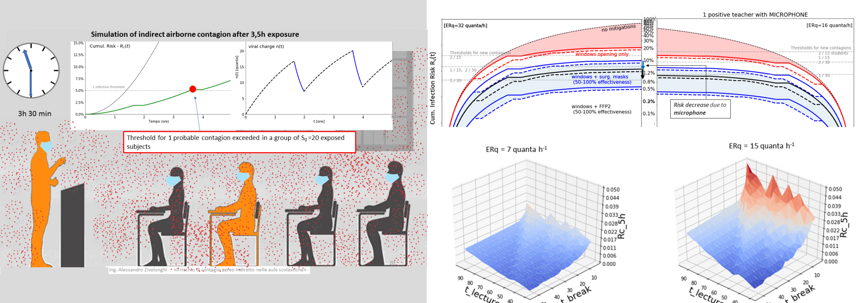© Copyright 2021 Powerconsulting - Ing. Alessandro Zivelonghi - cf/p.iva 04306540230 contatto mail: ing.zivelonghi@gmail.com
Articoli di stampa - tema ventilazione e rischio contagio
Stampa italiana
2021
Corriere della Sera - Covid, vaccini e ventilazione nelle scuole
Corriere della Sera - Covid, come gestire (davvero) la sicurezza negli ambienti chiusi
2020
Speciale Corriere - Quali sono i rischi di contagio da Coronavirus a scuola ?
Corriere della Sera - Coronavirus, la Germania migliora la ventilazione per cacciare il Covid
Stampa internazionale - International press
2021
El Pais - El caso de los 12 ninos contagiados de covid por su profesora
2020
M.Gilraine - The importance of clean air in classrooms during pandemics and beyond
El Pais - A room, a bar and a classroom: how the coronavirus is spread through the air
Letteratura scientifica su "Aerosol Infection Risk"

Selezione di Articoli Scientifici Peer Review (in inglese)
2021
D.Lewis - Why indoor spaces are still prime COVID hotspots, Nature, March 2021
J.E. Castellini et al. - Assessing the use of portable air cleaners for reducing exposure to airborne diseases in a conference room with thermal stratification Building and Environment October 2021, 108441
A.Zivelonghi, M.Lai - Mitigating aerosol infection risk in school buildings: the role of natural ventilation, volume, occupancy and CO2 monitoring Building and Environment 204 (2021) 108139
L. Stabile et al. - Ventilation procedures to minimize the airborne transmission of viruses in classrooms Building and Environment (2021), 108042
2020
Rosti et al. - Fluid dynamics of COVID-19 airborne infection Nature Scientific Reports volume 10, Article number: 22426 (2020)
L. Morawska et al. How can airborne transmission of COVID-19 indoors be minimised?, Env. Int. Volume 142, September 2020, 105832
G.Buonanno, L. Stabile, L.Morawska Estimation of airborne viral emission: Quanta emission rate of SARS-CoV-2 for infection risk assessment, Env. Int. Volume 141, August 2020, 105794
Letteratura scientifica (in italiano)
2021
L. Moccia - Rischio COVID-19 via Aerosol nelle Scuole Note bibliografiche, esempi di interventi, e loro dimensionamento
F.Busato, A.Cavallini - Approccio teorico sul ricambio d'aria nelle scuole italiane: aspetti energetici, qualità dell'aria e valutazione del rischio di infezione da Sars-CoV-2 Parte 1
2020
A. Zivelonghi - Mitigare il rischio di contagio aereo indiretto nelle aule scolastiche
© Copyright 2021 Powerconsulting - Ing. Alessandro Zivelonghi - cf/p.iva 04306540230 contatto mail: ing.zivelonghi@gmail.com